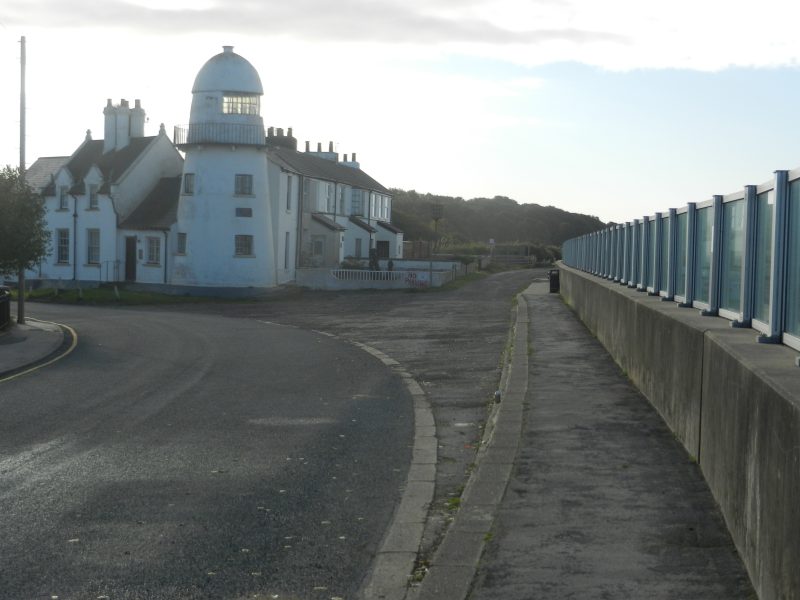
The photo above shows the redundant lighthouse at Paull, built in 1836 and on the north bank, this taken recently. All three lighthouses built in 1836 had lighthouse keeper’s cottages built onto the structure. In the case of the Paull one (above) I am not sure if the small building left of the main structure is the keeper’s cottage or the two storey one immediately right. Certainly, the terrace beyond was built a bit later as coastguard cottages while the two-storey house to the left, although part of the complex will not have been built as a keeper’s cottage. A sketch of the Killingholme South Low Lighthouse in the 1939 book (s.p.b.s) and one of Paull Lighthouse in Arthur Storey’s book (s.p.b.) both show the keeper’s cottages as single storey with tall gable-end external chimney stacks to improve the draught of the fireplace to combat being next to a taller building. Paull lighthouse has an inscription plate built into its wall.
These lighthouses were commissioned by London Trinity House, it being the management centre of the organisation by 1836, any plans by local ‘houses’, e.g. Hull Trinity House, having to first be approved by ‘head office’.
So, was Paull lighthouse to be a stand-alone beacon or to have a high light as at Killingholme? It seems, from the evidence provided by Arthur Storey, that a high light was planned at Paull but by the time funding was available other (cheaper!) aids to navigation had come into use.
Finally, for today, Storey adds an account whereby instructions issued by Trinity House stated that any ship encountering problems in the Killingholme area could ‘take the Ground with Safety the bottom being mud’. In other words, let the hull sit on a mudflat until released by the next high tide.
(to be continued).